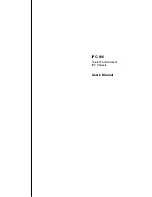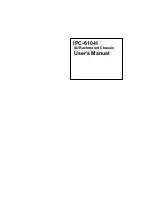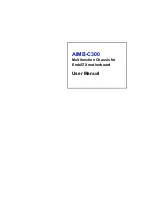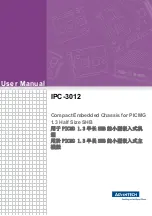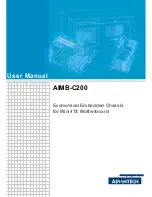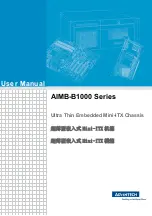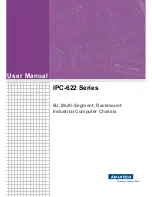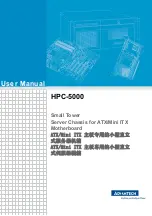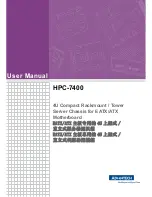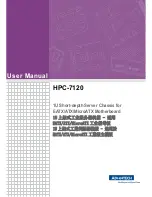
Circuit Descriptions, Abbreviation List, and IC Data Sheets
9.
9.5.3
Video Processing
Figure 9-8 Video processing 2fH/3fH input
The output towards the electronics of the set (after the A/D
converter) consist of:
•
Y-, U-, and V-2FH-AD-OUT video signals.
•
H- and V-2FH-AD-OUT sync signals (see figure "Sync and
clock flow" further on).
•
Left and right analog audio channels (see figure "Audio
block diagram" further on).
•
CLK-2FH clock signals (see figure "Sync and clock flow").
Notes:
•
In case of 2fH inputs, the signal is (after detection via the
EBILD) routed through the FBX for picture improvement.
The YUV output of the Eagle is then routed to the EBILD
for the displaying part.
•
In case of 3fH inputs, the signal is not routed via the FBX,
but directly processed by the EBILD.
9.5.4
Miscellaneous
Comb Filter
The comb filter functionality can be enabled or disabled via the
HIP. This means allowing or disallowing the HIP to use the
comb filter. Both the conventional 2D comb filter (EUR) and the
3D Comb filter (USA) have to use this HIP command.
Conventional (2D) Comb filters separate the luminance (black
and white picture information) from the chroma (color picture
information), by comparing horizontal scanning lines within one
video frame. The 3D Digital Comb filter takes this idea two
steps further by acting upon not only consecutive lines within
the frame, but in the frame before and after as well. The added
analysis and correction, result in far sharper pictures with less
noise as well as an enhanced purity of color. The filter also
compensates for any motion that occurs between fields.
The 3D Comb filter is integrated in one IC (type uPD64083).
The block diagram of the 3D Comb panel is indicated in the
next figure (re-use of R8 manual, does not reflect the actual
circuit
exactly
).
Figure 9-9 Block diagram 3D comb filter
Notes:
•
The command ENABLE_COMBFILTER enables the
function. If the TV standard that enters the TV is one where
a comb filter is applicable (e.g. PAL or NTSC, not SECAM),
the HIP will determine self if the video signal can be
combed and as a consequence, the video processing
output can be CVBS or Y/C. No software interaction is
CL 36532053_078.eps
160703
H- SYNC-VGA
V- SYNC-VGA
VGA
EPROM
Y Pb Pr
Matrix
RGB
YU V
Y( SOG )
TDA8601
AD 9883A
Video
SW
A/ D
SCL-
F3
SD
A-
F3
Y -2FH-0...7
U- 2FH-0...7
UV dem ux
Cont rast
saturation
br ight nes s
YU V
to
RG B
OS D
insertion
Contrast Reserve
A
D
A
lignm ent
YOUT(0.. .9)
U_VO UT (0...9 )
LCD
OTC
A/D
CLK
-O
S
D
FM
(low er lines )
FM
(upper lines )
Falconi c
Picnic
FM
YF-BUFF
UVF-
BUFF
Y
U
V
BUFF
Y-2FH-0...7
UV-2FH-0...7
BUFF
YF
UVF
Y -2FH -0...7
FM
BU
F
F
TR
IS
T
A
TE
FM
Eagle
DVI
RGB
H-SYNC-DVI
V- SYNC-DVI
SILICON
USA
EU ROPE
V -2FH-0...7
UV-2FH-0...7
EPL D
BU
F
F
LAMP-ON
RGBBL-
FDB-0...3
RGBBL-
OSD-0...5
LVDS Connector
RGBBL-OSD
TDA9805
DS90C385
LVDS Transmitter
CVBS Input
Amp & Filter
Y Output
Amp & Filter
C Output
Amp & Filter
Video Clamp
and Filters
NEC
PD64083
Sync
Amp
Power On
Reset
Xtal
PLL Filter
Memory Supply
Decoupling
Digital Supply
Decoupling
Analog Supply
Decoupling
2.5 V Reg
3.3 V Reg
8.0 V Filter
+8.0 V
+2.5 V
+3.3 V
+5.0 V
+8.2 V
+2.5 V
+3.3 V
Y to HIP
Input
CVBS From
HIP Output
C to HIP
Input
+8.0 V
From Main
Chassis
Supplies
+8.0 V
84
50
52
48
47
76
57
83
88
CL 26532058_016.eps
050602
FTL13U_AA_AB_312278513481.book Page 146 Thursday, December 30, 2004 1:50 PM





































